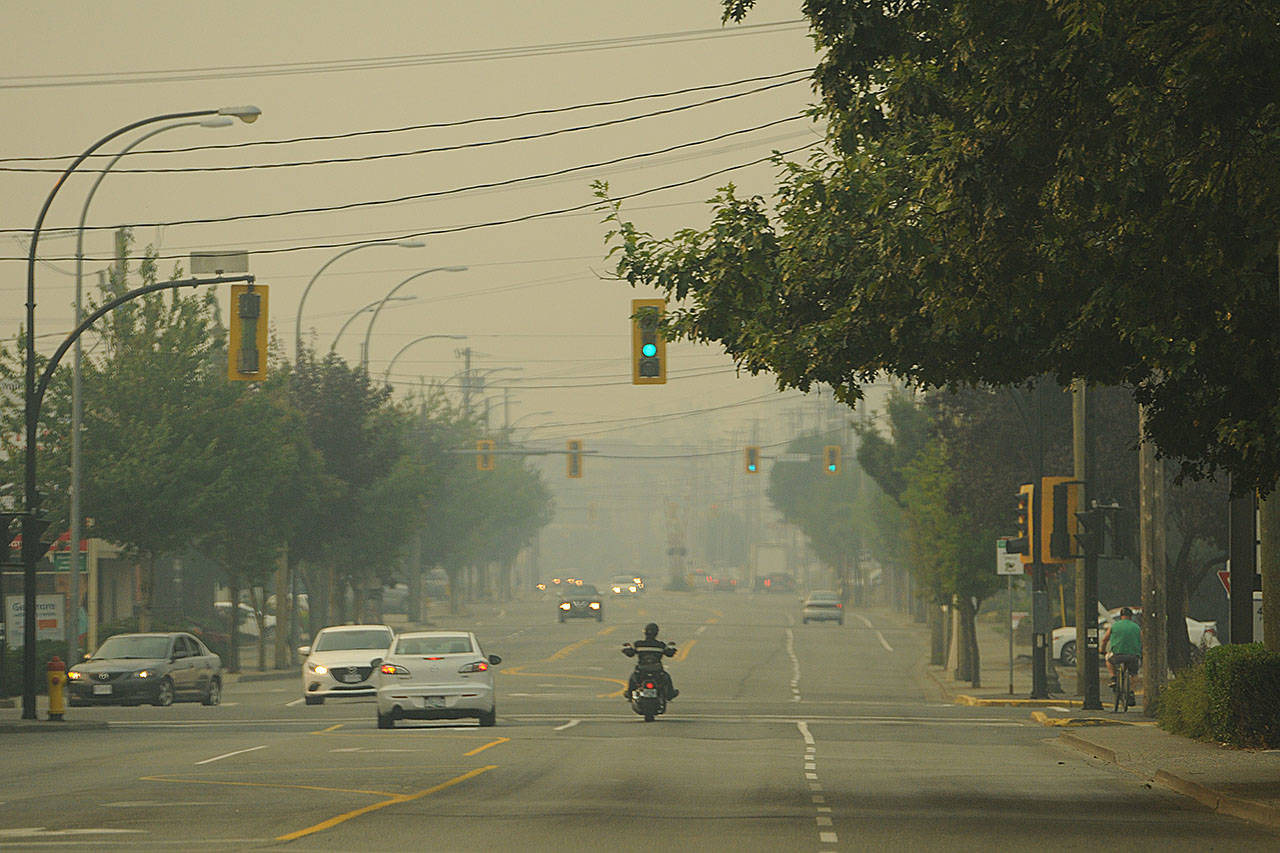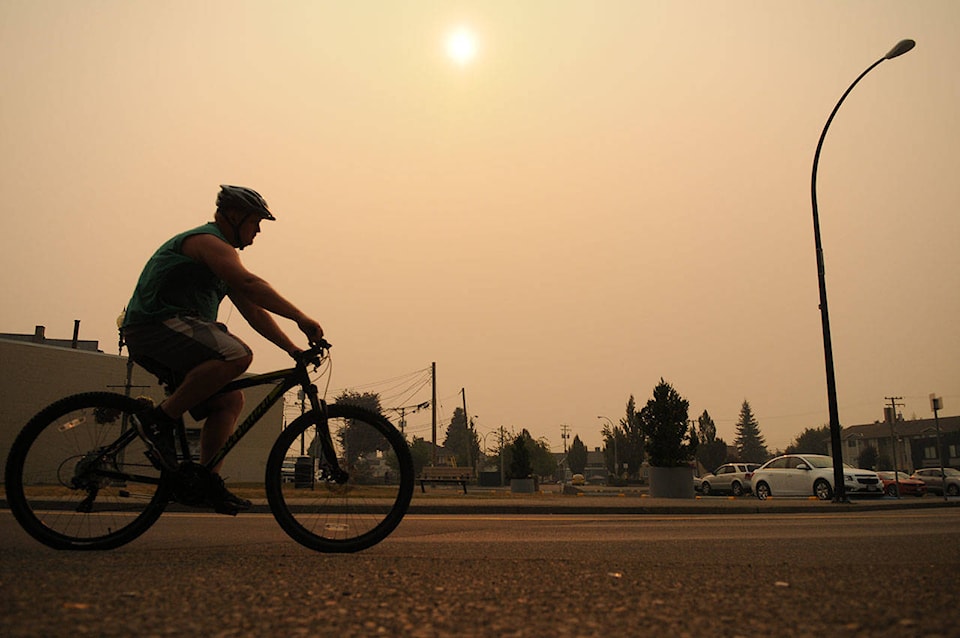Wildfire smoke continued to cast an eerie light over Chilliwack Wednesday as an air quality advisory issued Monday remained in place.
The Air Quality Health Index for the Eastern Fraser Valley climbed to nine on a scale of one to 10 on Wednesday, but by 3 p.m. was back down to eight. That’s up from seven on Tuesday, and compares to the Central Fraser Valley, which hit 10.
That gives the Fraser Valley the poorest air quality in the Lower Mainland – worse even than Williams Lake. Kamloops, however, was at 12.
The rating of seven to 10 indicates a “high health risk,” according to the environment ministry.
Children, the elderly and people with compromised health are being advised to take it easy.
For everyone else, says the ministry, “Consider reducing or rescheduling strenuous activities outdoors if you experience symptoms such as coughing and throat irritation.”
The poor air quality is being blamed on forest fires from B.C.’s interior, coupled with a change in wind direction.
Compounding the situation is the extreme heat expected throughout the week. Thursday’s forecast high for Chilliwack is 35 C.
The advisory is expected to continue until there is a change in the current weather.
Smoke concentrations may vary widely across the region as winds and temperatures change, as well as fire behaviour.
Fine particulate matter, also known as PM2.5, refers to airborne solid or liquid droplets with a diameter of 2.5 micrometres (µm) or less. PM2.5 can easily penetrate indoors because of its small size.
For up-to-date information on air quality, go to the Air Quality Health Index, or MetroVancouver air map.
At the summer camps for kids taking place at the University of Fraser Valley (UFV), they are taking precautions to keep participants safe from both the smoke and the heat.
Cheryl Van Nes, program manager for the UFV Campus Recreation and Wellness says they are using a combination of indoor and outdoor spaces for their summer camps. They will move indoors entirely as needed.
“For our physical literacy camp in Chilliwack this week, more than half of our scheduled activities take place in air-conditioned indoor facilities or shaded outdoor spaces,” she says. “We’re monitoring the weather and air quality, and have the flexibility to move more of our activities indoors as the temperature rises. We also ensure our campers are drinking plenty of water and are well-hydrated, and parents have also been notified to send sunscreen and a hat for those times we are outside.”
The recent weather in early August comes after a July that saw just nine millimetres (mm) of rain. That level of precipitation was 80.4 per cent below normal at 46 mm, the driest July since 2013, according to Roger Pannett, volunteer weather observer for Environment Canada.
Pannett said the combined June and July rainfall total was 63.7 per cent below normal, the driest for the period since 2004.
The City of Chilliwack 2017 precipitation total to date is 825.8 mm on 107 days compared to the average of 983 mm on 97 days.
And August has already seen a temperature record, according to Pannett, as the mercury hit a low of 18.2 C on Aug. 2, a high record minimum beating the previous record of 16.5 C in 2014.
More high temperature records are likely over the coming days.

